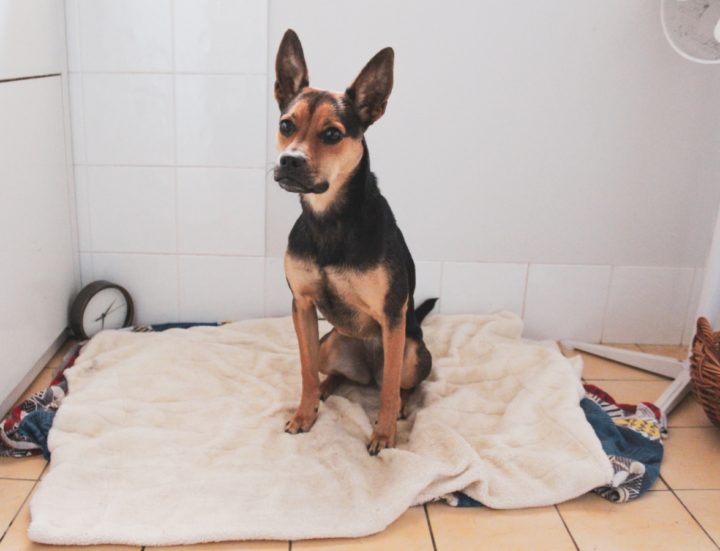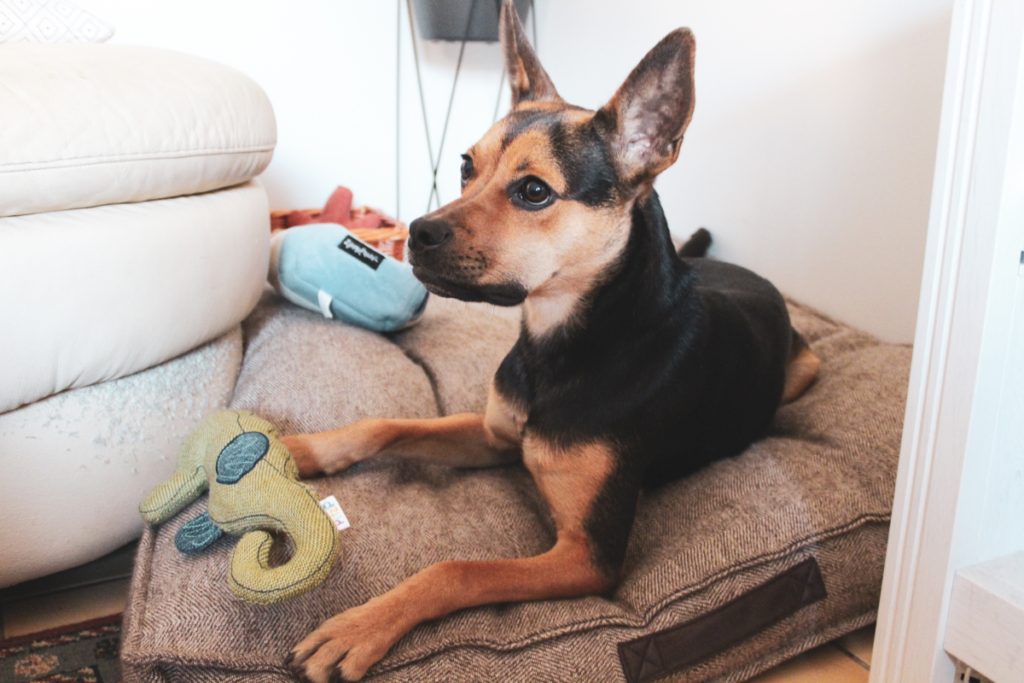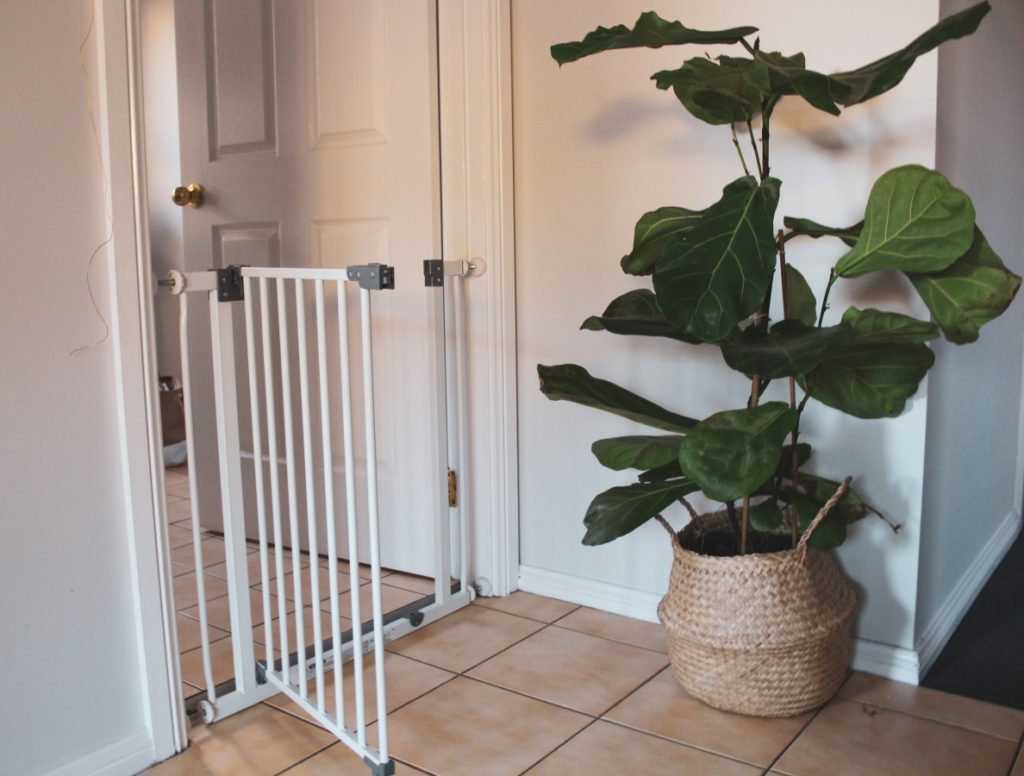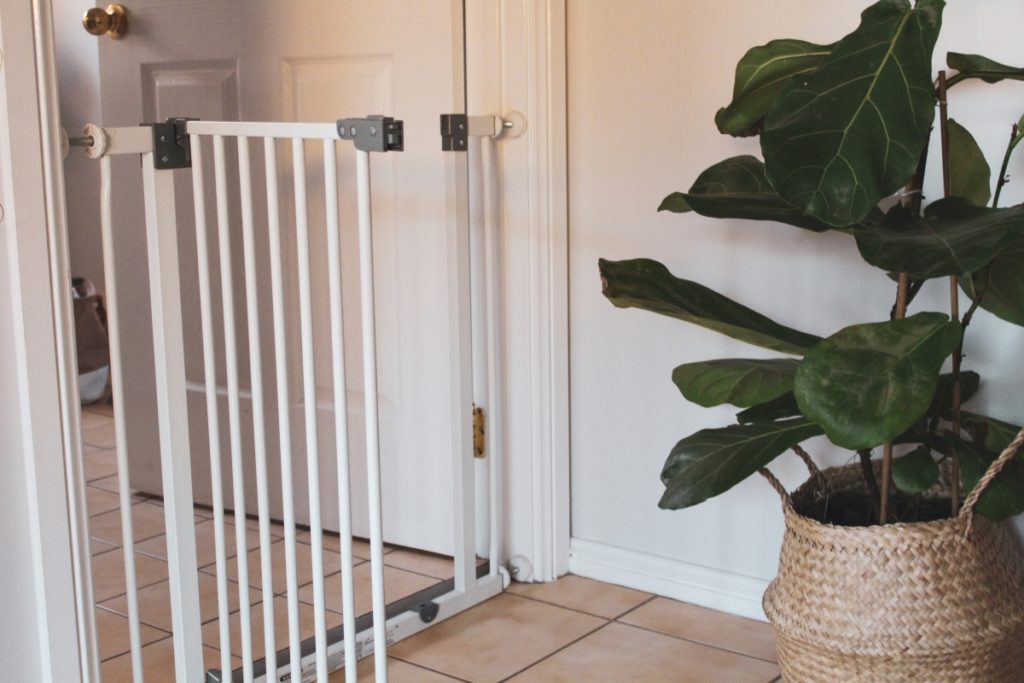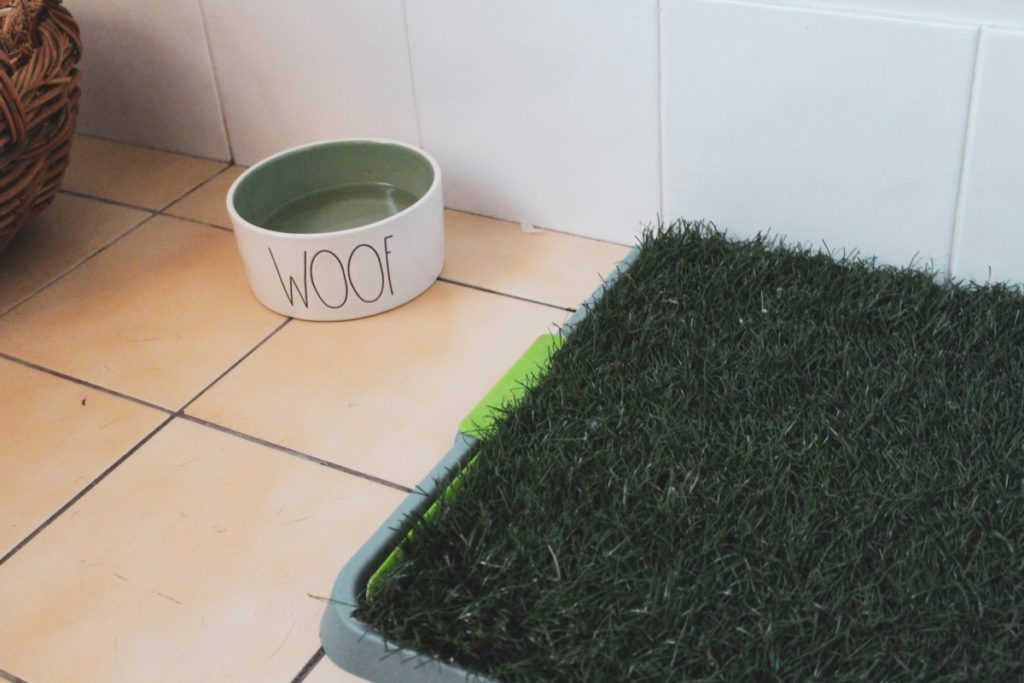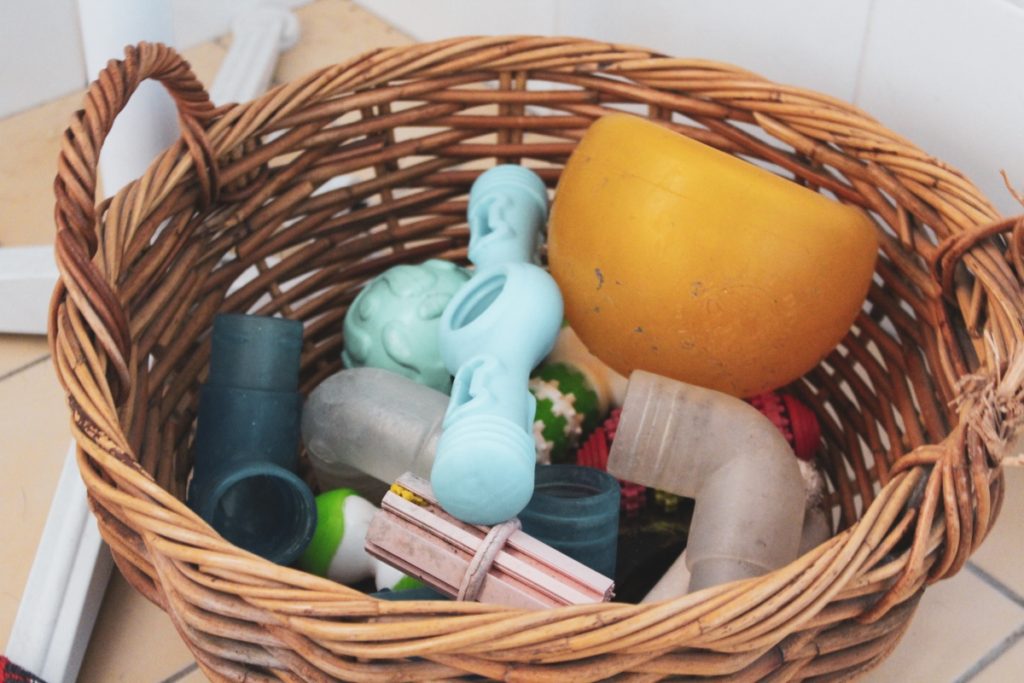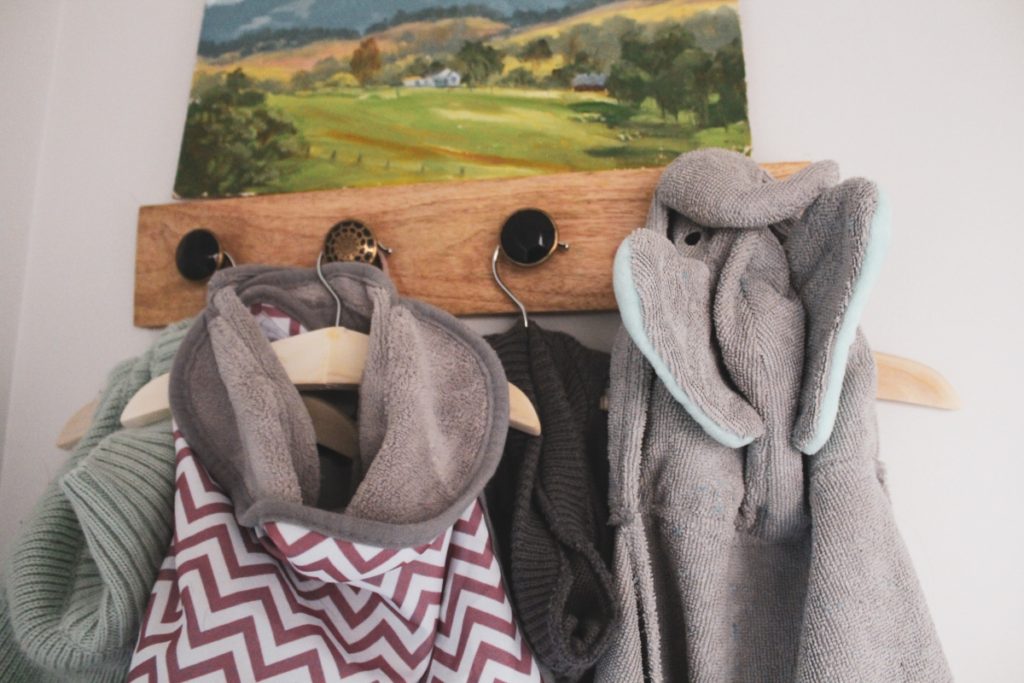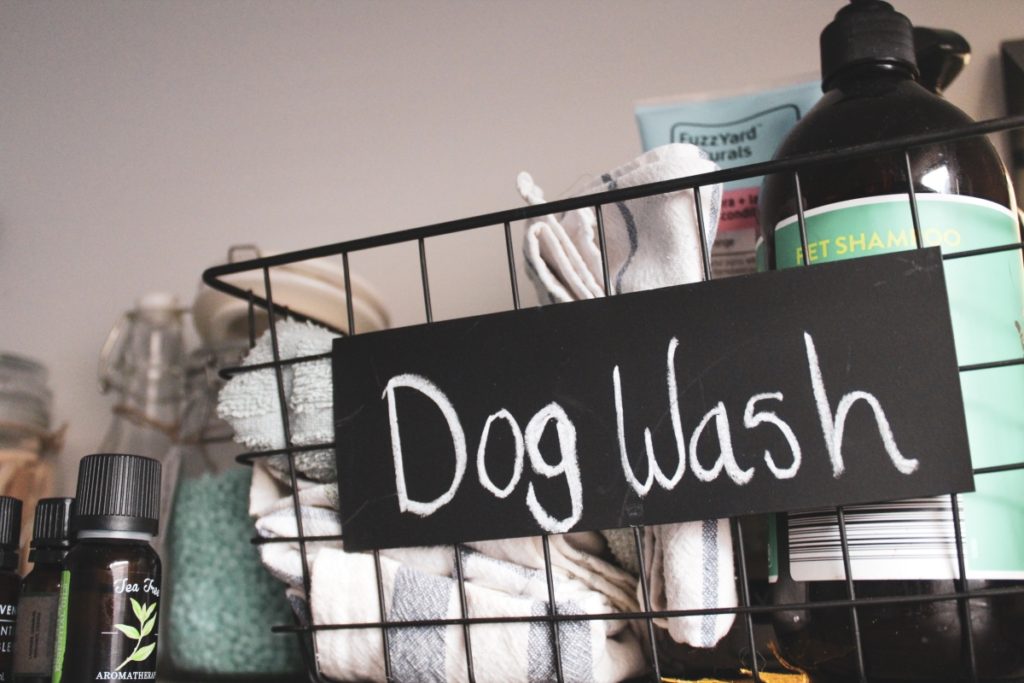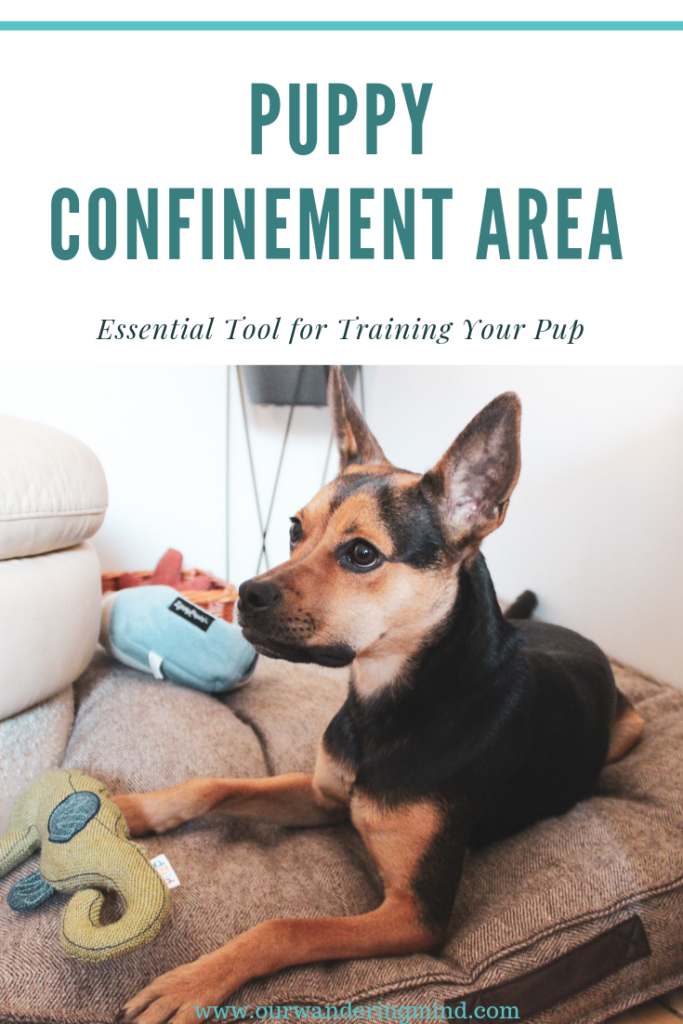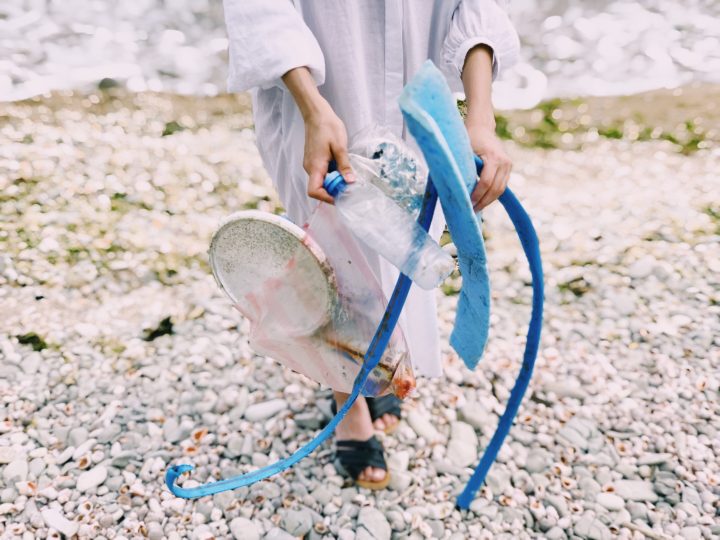The idea of a confinement area for your new puppy may sound a bit controversial. However, there should be nothing negative associated with a confinement area for your puppy.
A confinement area will act as a safe space for your puppy and peace of mind for you, a new puppy owner. In this post, I’ll not only go through the benefits of having a confinement area for your new puppy and why you absolutely need one but also show you our confinement area for our own puppy, Freyja.
If you just got a new puppy, or are thinking about it, you’ll definitely want to check out my other puppy related blog posts like Choosing the Right Dog for You and 5 Things to do the First Week You Get a Puppy. One of the essential things we did after getting Freyja, was setting up a confinement area and it’s one of the best things we did not only for us but for her as well.
The Benefits of a Confinement Area
A confinement area is a safe space that can help your puppy learn to be potty trained, avoid any destructive chewing, and stay clear of any household hazards like electrical, breakable objects, or other pets. It can also be a great aid in basic training for your puppy along with being a safe space for your puppy to be while you’re not home.
Puppies are very curious and with curiosity, there can tend to be trouble involved. There are a lot of traits that come along with a puppy like chewing and having accidents around the house. 8-15 weeks of a puppy’s life is an essential period of time to train and socialize your pup. This is a crucial time where your puppy is learning acceptable behaviors. Having a confinement area teaches the puppy about where it’s acceptable to go to the bathroom, what they can and cannot chew, and also helps avoid any separation anxiety your puppy may develop.
Along with being a safe space for you to have your puppy when you’re not home, confinement areas are also great when you’re home as well. Puppies require constant attention to avoid them constantly chewing on shoes, getting into household plants, or getting in dangerous situations like chewing on electrical cords or breaking glass objects. A confinement area is a space where your puppy can still run around, have fun, go to the bathroom, but give you the peace of mind that your puppy is in one spot and not in harm’s way.
What Should Be In Your Confinement Area
A lot of parts of your confinement area for your puppy is completely customizable. However, there should be a few basic items that are essential to make a comfortable confinement area for your puppy.
Your confinement area should include the following:
- A bed or crate
- A designated place to go to the bathroom
- Water bowl
- Toys/ play area
Your confinement area needs a place for your puppy to relax and nap. Puppies especially need to nap quite frequently and having a comfy bed or a crate is a place where your dog will know that’s where they sleep. I recommend starting out with a crate in the confinement area that’s always left open. We did this for the first few months of having Freyja, which helps if we go away somewhere and she has to sleep in her crate, she’s at least familiar with sleeping in there already and it doesn’t seem foreign to her.
With bedding, we have a few blankets as Freyja’s bed as we found that she chewed up a lot of her beds that were left in her confinement area. We have had no problems with her chewing the blankets so if you’re worried about your puppy, especially in the beginning chewing up their bed, try folding some blankets instead.
To help with potty training your puppy, having a designated spot for your puppy to use the bathroom teaches your puppy what to do when they need to go potty. Having an area where our puppy can relieve themselves while we’re away at work, made me personally feel better about when I leave her during the work day and was one of the main things that sold me on the idea of having a confinement area.
We have an artificial grass pad that we use for Freyja and as she’s gotten older, she’s used the grass pad less and less and prefers to go potty outside, which is fantastic. We’ve tried regular traditional pee pads, but we have found that they’re very fun to chew up and destroy, so we switched to something a little more permanent like the artificial grass. There are also really cool services out there where you can get weekly fresh grass delivery for your puppy like Fresh Patch. Especially if we lived in an apartment unit, we would definitely look into a service like this.
Your puppy should always have access to a lot of fresh water. Since your puppy has a designated place to relieve themselves while you’re away, you don’t need to worry about your puppy drinking too much and having to go potty while you’re not home. We have a very large water bowl in our confinement area to ensure our puppy has more than enough fresh water when we’re not there.
Toys are not only a lot of fun but are very beneficial for your puppy. Toys are an outlet for your dog to get that chewing urge out of their system, but also can reward your puppy and create mental stimulation with the use of food toys. I touched on the importance of food toys on my 5 Things You Need to Do the First Week With Your New Puppy. Food toys are not only super fun, but they keep your puppy occupied, fed, and mentally busy while you’re away. It also teaches them that barking and whining doesn’t mean they’ll get their way, a great lesson for them to learn. A puppy that’s stimulated and well-fed, is a puppy that won’t chew on unwanted items out of boredom.
When your puppy chews items or destroys pillows or other items like shoes, it’s because they’re not stimulated enough. Getting complex toys like the K9 Connectables and as they get smarter and more clever, you can add more and more levels to your puppy’s toy and keep your puppy interested and entertained.
Our Confinement Area
The location of your confinement area may be different than everyone else. You have to decide on what will work with your lifestyle and your home. We decided to make the laundry room into Freyja’s room. It was a large enough room, has a window, and doesn’t have too much in the room itself.
We used a baby gate to block the entrance of the laundry room. We didn’t want to use a pen style because we didn’t have the space for that in our house so just using a baby gate to block off the door way was a great way to give her access to that whole room, without creating any difficulty for us to access the room when we need to use it.
The baby gate isn’t that high and as Freyja got older, we realized that she can, in fact, jump over the gate. However,
we have made her confinement area a safe space, a space that she enjoys being in and doesn’t want to escape when we’re not home.
I’ll provide some tips for creating your confinement area as a safe space towards the end of this post.
We have a large water bowl in the room that is more than enough water for Freyja during the day and night.
We then have a basket of toys in here in case she wants to play. We do find that unless we give her a food toy, she tends to actually sleep while we are away, but if she does want to play, she has the option of lots of different toys. It’s also good to have a selection of different texture toys, both hard and soft to give your puppy variety and different sensations.
Some other things we have in this room is a fan that’s great in the Summer when we want air circulating in the room and we also have an automatic night light that gives her a little bit of light at night.
For her bed, as I mentioned, she originally had her crate in her room with a bed and that lasted a while. I then realized that she didn’t really need the crate and I didn’t want to necessarily have the bulky crate up for everyone to see if I didn’t have to. We switched to a bed and that worked out really well until she started chewing up her bed. Once Freyja realizes something has stuffing inside, it’s her mission to get all of it out. Doesn’t matter if it’s a bed or stuffed toy, she loves to get all the stuffing out.
We then switched to just having a couple of blankets folded up to create a bed and that’s worked out great and she hasn’t bothered chewing it. It’s also been great because it’s super easy to wash and keep clean.
Lastly, as I mentioned, we have an artificial grass pad from Kmart. This grass pad is very cool as it’s super easy to clean. We’ve had this grass pad for nearly half a year now and she’s used it less and less as time goes on and her bladder gets larger and larger.
To clean the grass pad, all we have to do is hose down the grass pad and the different parts of it outside and we like to use either mild hand soap or a vinegar and baking soda combination to deep clean it every few days or as much as needed.
Tips for Getting the Most Out of Your Confinement Area
The confinement area should be your puppy’s safe space and somewhere they enjoy going. We’ve got the point that Freyja now walks into her confinement area when she’s ready for bed and without us having to tell her to go in there. I’ve listed some tips below of what we did to make this space a happy space for Freyja and not a negative space.
Make the Confinement Area Fun
We made Freyja’s confinement area a fun space that’s associated with good times. As I mentioned, we have tons of toys in her room, but she also gets tons of yummy treats in her room. If we give Freyja a bone or a food toy, she knows that she either takes it outside or in her room. It’s great for us not having to worry about a mess, but Freyja now associates yummy treats with her confinement room.
Using your puppy’s confinement area to give bones is also great if your puppy is defensive when it comes to bones and treats. Especially if you have small children or other pets in the house, giving your puppy a bone and letting them be alone with it in their room will avoid any problems or your puppy from worrying about anyone taking their bone. There are a few ways to avoid defense guarding and your puppy being fine with eating a bone around other people, but if you had something super delicious, you wouldn’t want someone to take it away from you either, right? So them being defensive about their bone, totally makes sense, but to avoid any accidental bites, just leave your puppy alone with their bone in their confinement room and there won’t be any problems.
Keep the Door Always Open
When we’re home, Freyja’s confinement door is always open. This allows her access to her room all the time and allows her to go in there as she wishes. As I mentioned, about 8 o’clock or so she tends to head to her room and tucks herself into bed which is so cute. She has a bed out in the living room where she can be if she wants to, but just like we all need our alone time, having Freyja’s room is a space she knows she won’t be disturbed and she can be alone.
Avoid Other Animals Going in It
We have two cats as well as Freyja, which can be a handful, to say the least. We have certain areas in the house that Freyja isn’t allowed to go to give the cats a safe space and same with Freyja’s confinement area with the cats not being allowed to go in it. Although sometimes we catch the cats trying to sneak in, they know they’re not supposed to go in there and if we catch them trying to go in, we tell them to get out. Doing this just gives the reassurance that that is your puppy’s space and they can feel safe in it.
“Go to Your Room”
If you have a room as we do, training your puppy to “go to your room” is a great way for them to get excited about their room and go in there in their own means instead of being dragged in. Teaching your puppy to go to their room is pretty simple and won’t take long at all.
Simply start saying “go to your room” and put pieces of puppy food in the room so they hear “go to your room” and they walk into their room. After doing that a few times, your puppy will start to understand that saying “go to your room” means to walk into their room. When your puppy has caught on, you can then start moving around the house and giving your puppy the command and then reward them when they’re in their confinement room. This whole exercise really doesn’t take long at all and will save you a lot of time when all you have to say to your puppy is “go to your room” and they’re already in there.
Don’t Associate The Confinement Area With You Leaving
Only having your puppy go in their confinement area when you leave is a really bad idea because then they only associate being in the room with you leaving, which isn’t fun for them. After we take Freyja on a long walk, when we are cooking dinner, the cats are eating their dinner, or just when she’s getting a little crazy, we put Freyja in her room for a bit. She may whine for a minute or two, but she normally goes and takes a nap shortly after we put her in there. Her seeing us still in the house while she’s in the room with the door close means that just because she’s in her room, doesn’t mean we’re no longer home. This is really good to do if your puppy has separation anxiety, but will also help avoid any separation anxiety problems as your dog gets older.
No Whining
One of the basic training exercises that is a must when it comes to your puppy’s confinement area is no whining. You want to do this in many aspects of your puppy’s life such as being outside and waiting to come inside. You don’t want your puppy to associate whining or barking with getting attention from you. I know especially in the beginning, it’s heartbreaking to hear your puppy whining all night or if you were like us, worried that the neighbors would think your puppy was dying with the noises she was making throughout the first few nights. Trust me, it was bad. After a while, if you don’t give in to your puppy’s whining, they will not associate whining with getting attention from you. Something that is a miracle as your puppy gets older.
Instead of letting your puppy out when they’re whining, wait 10-15 minutes after any whining when your puppy has settled and reward them. You can reward them by letting them out of the room or simply by giving them a treat. The worst thing you can do for your sanity is to reward your puppy’s behavior of whining with any sort of attention, good or bad. You can also reward your puppy when they’re in their room quietly randomly throughout the day. This is rewarding their positive behavior and letting them know how they’re acting is good.
I hope you found this blog post helpful of Why You Need a Confinement Area for Your Puppy. Although I recommend having a confinement area as soon as your puppy comes home, this is definitely something you can implement any stage of your dog’s life, it just may be harder the older they get.
I also want to note that just because you have this confinement area doesn’t mean you have to use it all the time. As Freyja has gotten older, we’ve started trusting her outside of her room more and more when we’re not home. I still don’t see myself leaving her out during the whole day or anything for an extended period of time because I don’t want to come home with all my throw pillows shredded, but it’s nice to give her those little tastes of freedom every now and again so if for some reason we can’t put her in the confinement area we know she will be okay.
Shop the Post

